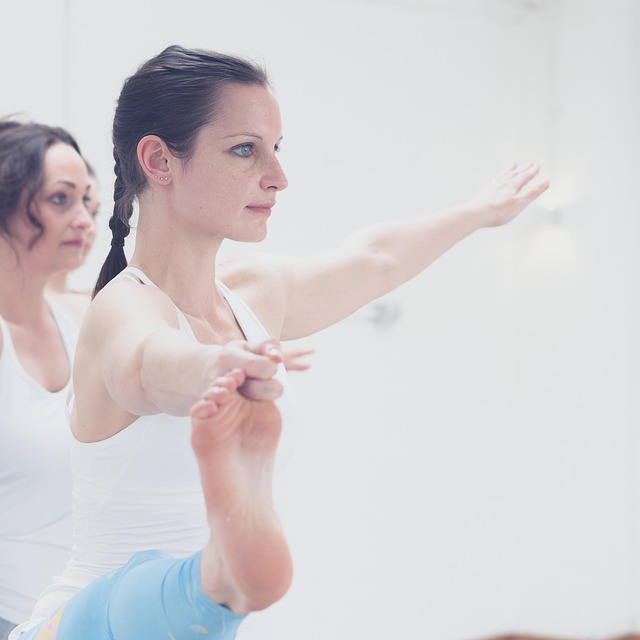Mastering exposure is the cornerstone of every successful photographer’s journey. Whether you’re shooting with a simple point‑and‑shoot or a high‑end DSLR, the ability to control how much light enters the sensor determines the clarity, texture, and emotional impact of your images. In the context of photographer training, understanding exposure is not just a technical requirement—it becomes a creative language that communicates mood, depth, and narrative. This article delves into the fundamentals of exposure, the optics that govern how light behaves, and practical strategies that can be incorporated into a comprehensive photographer training curriculum.
The Exposure Triangle: A Balancing Act
At the heart of exposure lies the exposure triangle—aperture, shutter speed, and ISO. Each lever influences the sensor’s light intake, and adjusting one inevitably shifts the others. In photographer training programs, instructors emphasize that mastery comes from experimenting with the triangle in real‑time scenarios rather than relying solely on auto modes. By learning how to trade aperture for depth of field, or shutter speed for motion blur, students develop an intuitive sense for when to push the boundaries of each parameter.
- Aperture (f‑stop): Controls the size of the lens opening. Wider apertures (lower f‑numbers) let in more light and create shallow depth of field, whereas smaller apertures (higher f‑numbers) increase depth of field but require longer exposure times.
- Shutter Speed: Governs the duration the sensor is exposed to light. Fast speeds freeze motion; slow speeds capture movement as blur.
- ISO: Adjusts the sensor’s sensitivity to light. Higher ISO values allow shooting in low light but introduce noise.
Calculating Exposure Values (EV)
Every exposure setting can be expressed as an Exposure Value (EV), a logarithmic scale that simplifies comparison across lenses and lighting conditions. In photographer training, students learn to convert between EV, shutter speed, and aperture using the standard exposure value table. This knowledge allows them to predict how changing one variable will affect the others, enabling precise control during complex scenes.
“Exposure value is like the currency of light; mastering it gives you the power to purchase the image you desire.” – Anonymous
Optical Fundamentals: Light, Lenses, and Quality
The journey from photon to pixel begins long before light reaches the sensor. It first interacts with the lens—an assembly of glass elements shaped to focus rays onto the focal plane. In photographer training, an appreciation for optical principles such as diffraction, aberration, and focal length is essential. By understanding how each optical factor influences image sharpness, contrast, and color rendition, trainees can make informed choices about lens selection and usage.
Diffraction and Aperture Selection
Diffraction occurs when light waves pass through a small aperture, causing a spreading effect that reduces sharpness. Every lens has an optimal f‑stop—often around f/8 to f/11—where the trade‑off between depth of field and diffraction loss is minimized. In a photographer training context, students practice identifying their lens’s sweet spot by taking macro comparisons at various apertures and noting the point where sharpness peaks.
Chromatic Aberration and Color Accuracy
Chromatic aberration is a chromatic error where different wavelengths of light fail to converge at the same focal point, producing color fringes around high‑contrast edges. Modern lenses incorporate low‑dispersion glass and special coatings to mitigate this issue. During photographer training, participants evaluate aberration by shooting a checkerboard pattern and measuring color fringing. This hands‑on exercise reinforces the importance of optical quality in achieving clean, color‑accurate images.
Real‑World Application: Light Management Techniques
Beyond technical settings, photographer training emphasizes practical light manipulation. Light is the most versatile tool in a photographer’s arsenal, and learning how to control it turns good images into great ones. Below are several techniques that trainees often master early on:
- Using Reflectors: Positioning a white or silver reflector to bounce ambient light onto the subject can soften harsh shadows and illuminate facial features.
- Employing Flags and Gels: Flags block unwanted light, while colored gels filter light to create mood and emphasize certain tones.
- Golden Hour and Blue Hour Shooting: Understanding the subtle shifts in color temperature during sunrise and sunset enables photographers to capture natural, cinematic scenes.
- Flash Synchronization: Mastering the sync speed of the camera and the proper distance for flash use prevents over‑exposure and creates dramatic lighting.
Advanced Exposure Strategies
Once the fundamentals are solidified, photographer training delves into more advanced exposure techniques. These methods allow practitioners to push creative boundaries while maintaining technical excellence.
High Dynamic Range (HDR) Imaging
HDR photography captures a wider range of brightness levels by merging multiple exposures. In training, students learn to bracket exposures, maintain a consistent focus point, and use software to blend images seamlessly. The result is an image that preserves detail in both shadows and highlights, offering a more realistic representation of the scene.
Long Exposure Techniques
Long exposures reveal motion that would otherwise be invisible. In photographer training, participants practice using neutral density filters to reduce light and avoid over‑exposure, setting precise shutter speeds from several seconds to minutes. This technique is particularly powerful in landscape and night photography, where water movement, star trails, and light trails can be beautifully captured.
Bracketing and Focus Stacking
Bracketing is a method where multiple shots are taken at different exposure values or focus distances. Focus stacking—combining these shots—ensures sharpness across the entire frame. Trainees learn to automate bracketing, maintain constant camera settings, and employ stacking software to produce images with incredible depth of field and tonal fidelity.
Integrating Exposure into a Holistic Training Curriculum
Exposure knowledge cannot exist in isolation. A well‑structured photographer training program weaves exposure concepts into broader subjects such as composition, color theory, and post‑processing. By contextualizing exposure within these domains, students develop a comprehensive understanding that enhances both their technical and artistic capacities.
Workshops and Field Trips
Hands‑on workshops expose students to varying lighting environments—studio, studio‑free, and natural light settings. Field trips to diverse locations, such as urban rooftops or forested valleys, challenge trainees to apply exposure techniques under unpredictable conditions. These experiences reinforce problem‑solving skills that are crucial in real‑world photography.
Mentorship and Peer Review
Constructive critique is a vital component of photographer training. Regular mentorship sessions provide personalized guidance on exposure decisions, while peer review groups encourage collaborative learning. By sharing exposure settings, challenges, and solutions, participants build a community of practice that elevates collective skill levels.
Evaluating Exposure Mastery
Assessment in photographer training extends beyond theoretical exams. It includes portfolio reviews, technical quizzes, and practical assignments that test the ability to control light across different scenarios. Evaluators look for consistent exposure decisions that enhance the intended narrative and for adaptability when faced with adverse lighting.
Case Study: Portrait in Mixed Light
Consider a portrait session with a subject partially lit by a window and partially in shadow. A trainee might choose an aperture of f/4 to keep the subject in focus, a shutter speed of 1/125 to freeze movement, and an ISO of 200 to balance exposure. Using a reflector on the shadow side brings out facial details without over‑exposing the window glow. This practical example demonstrates how exposure theory translates into tangible image outcomes.
Case Study: Night Landscape with Stars
For a night landscape, a photographer might set ISO to 800 to capture faint starlight, shutter speed to 30 seconds to accumulate enough light, and aperture to f/11 to maximize depth of field. By bracketing exposures and stacking the images, the student ensures clarity from foreground trees to the Milky Way, illustrating advanced exposure application in a challenging environment.
Future Trends in Exposure and Optics
The evolving landscape of camera technology continuously reshapes how photographers approach exposure. Innovations such as in‑sensor dynamic range expansion, real‑time exposure preview, and computational photography open new creative possibilities. In photographer training, staying abreast of these trends ensures that students are not only proficient with current gear but also adaptable to future developments.
Computational Photography
Modern smartphones and mirrorless cameras now integrate algorithms that combine multiple sensor readings into a single, optimally exposed image. Trainees learn to interpret how these algorithms work and when to rely on manual control versus computational assistance, ensuring they maintain artistic intent.
Advanced Lens Technologies
Next‑generation lenses feature adaptive optics, electronically controlled aperture blades, and AI‑driven focus adjustments. Understanding the underlying principles equips students to troubleshoot issues and extract maximum performance from their equipment.
Conclusion: The Photographer Training Journey
Exposure mastery is a continuous journey that blends science, skill, and imagination. Through deliberate practice, theoretical grounding, and real‑world application, photographer training empowers individuals to harness light with confidence and creativity. As technology advances, the core principles of exposure and optics remain steadfast—providing a solid foundation upon which future generations of photographers can build. By internalizing these concepts, every aspiring photographer transforms light into narrative, crafting images that resonate across time and culture.



